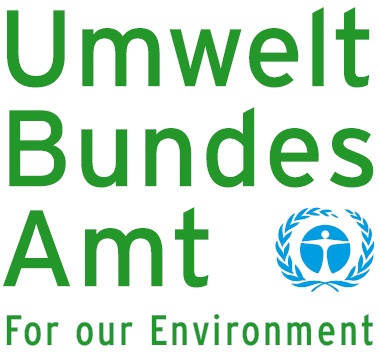Scope and Objectives
Growing population and increasing wealth are incentives for further growth of the agricultural production in all parts of the world. The potential drawback of growth of the agricultural production is an increase in the pollution of the terrestrial and aquatic environment by nutrients, pesticides and trace elements as it has occurred in developed countries worldwide since 1950s. As is stated in a recently published results of an extensive research in the USA:
“… if U.S. agricultural production is to meet the challenge of maintaining long-term adequacy of food, fibre, feed, and biofuels under scarce or declining resources and under challenges posed by climate change and to minimize negative outcomes, agricultural production will have to substantially accelerate progress toward the four sustainability goals. Such acceleration needs to be undergirded by research and policy evolution that are designed to reduce trade-offs and enhance synergies between the four goals and to manage risks and uncertainties associated with their pursuit.”
(National Research Council, 2010).
Also on the European continent a comprehensive and thorough study leads to the conclusion that action is needed:
“… inaction is not a viable option for policy makers, and argues the case for immediate steps to be taken. To be effective in the longer term, such action needs to be sustained and coherent, and championed at high level.”
(GOS, 2011).
These two studies (National Research Council, 2010; GOS, 2011) show that the problem is not confined to the North Americas and Europe, but also the other continents will have to deal with this challenge. An example is the Mekong river basin with its a rapidly expanding population. This river basin is a microcosm of conflicting drivers and demands, and decisive policy action is needed to arrive at a compromise between short-term growth and sustainable exploitation of aquatic resources in the long term (GOS, 2011, p. 60).
In the European Union, environmental directives, aim at reducing the impact of human activities on the aquatic environment. For example, the Nitrates Directive (ND) intends to lessen the impact of agriculture and the Groundwater Directive (GD) and the Water Framework Directive (WFD) to reduce the impact of other sectors also. EU member states are obliged to make programmes of measures to abate and reduce environmental pollution. The European Commission has developed a blueprint to safeguard Europe’s water resources and to clarify what additional actions and tools are needed (EU, 2012).
Programmes of measures are the outcome of a political process involving science, policy, stakeholders and interest and pressure groups. Governments use programmes of measures to reach pre-defined environmental goals, such as good water quality. Programmes of measures contain obligation for actors, e.g., farmers, owners of nature areas or drinking water supply companies. Governments evaluate and adapt these programmes regularly. The success of implementation of these programmes depends, amongst others, on the acceptance of the programme of measures by the actors, advice and education, controls and enforcement.
It is not only the human activity that − via land use changes − leads to changes in water quality. Another influencing factor is the climate change. Though climate change is important and will also be considered in LuWQ2015, the primary focus of LuWQ2015 is on the effect of land use changes on water quality, on all scales, including the global, national and local scale.
LuWQ2015 is the follow-up of the successful LuWQ2013 conference held in The Hague, the Netherlands, in June 2013 (RIVM, 2013). LuWQ2013 had its origin in the series of so-called international MonNO3 workshops, held in 2003 and 2009, focusing on monitoring the effectiveness of the Nitrates Directive action programmes (RIVM, 2005, 2009).
EU (2012) A Blueprint to Safeguard Europe's Water Resources. Brussels, COM(2012) 673 final
GOS (2011) The Future of Food and Farming: Challenges and choices for global sustainability. London, the Government Office for Science.
National Research Council (2010) Toward Sustainable Agricultural Systems in the 21st Century . Washington, DC: The National Academies Press.
RIVM, 2013 (LuWQ2013 conference, The Hague, 10-13 June 2013)
RIVM, 2009 (second MonNO3 Workshop, 10-11 June 2009)
RIVM, 2005 (first MonNO3 Workshop, 11-12 June 2003)
Objectives
This conference aims to discuss the entire policy cycle for water quality improvement. This cycle includes problem recognition, formulation of technical options, the process of policy development, interaction with policy makers, stakeholders and pressure groups, policy implementation, monitoring and research. This conference also aims to intensify contacts, on the one hand, between scientists with a background in natural sciences and scientists with a background in social and economic sciences and, on the other hand, between scientists, water managers and policy makers. In short, the objectives are:
- to provide forum for exchange of scientific knowledge, research on system knowledge, modelling and uncertainty;
- to discuss the entire policy cycle for water quality improvement;
- to intensify contacts (a) between soil/water related scientists, agro related scientists, social scientists, ecological scientists and economists, and (b) between scientists, water managers and policy makers.
Target groups and keywords
Target groups are scientists, managers and policy makers involved in the policy cycle for water quality improvement. It includes activities characterised by the following keywords: agronomy, agro-economics, agro-sociology, water management, water policy, hydrology, aquatic ecosystems, terrestrial ecosystems, unsaturated zone, groundwater, surface waters, drinking water, monitoring, modelling, water quality, nutrients, pesticides and other organic agrochemicals, heavy metals.












